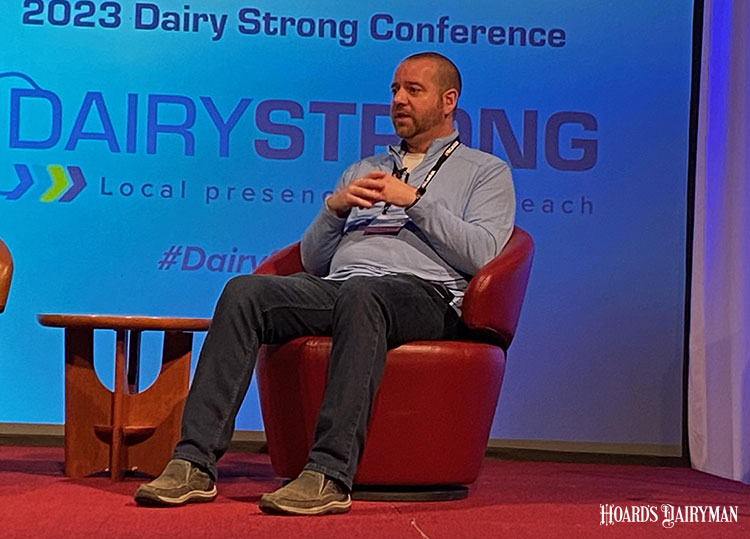
Dairy farmers that transition to robotic milking systems often comment on the different style of management it takes to care for cows in this type of barn, and Brian Houin is no exception.
“I pretty much had to throw out everything I knew about managing cows over the last 15 to 20 years because it is different,” he said during a panel discussion at the DBA Dairy Strong Conference held in Madison, Wis. “It was a good challenge, though, to learn how to manage cows in a robot dairy versus a conventional one.”
Houin farms with other family members on Homestead Dairy near Plymouth, Ind. A portion of the herd is milked in a barn built in 2017 that features 36 milking robots under one roof.
He shared a few examples of how their cattle management changed once they began milking in the robot barn. For starters, Houin said one of their biggest challenges was determining where to locate the footbath and how to move cows through it.
They decided to place a single lane footbath at the end of the pen and run cows through it while they bed the stalls. He said this works well, but it takes 45 minutes to move all 180 cows from the pen through the footbath while bedding only takes 10 minutes. If they were to do it again, he said they would incorporate a footbath with double lanes.
Another significant change occurred in their reproduction program. Instead of doing tasks such as synchronization protocols and pregnancy checks on a weekly basis, they now do them daily. “I like it better; this makes every day the same,” Houin said, spreading these necessary tasks out more evenly throughout the week. It also helps disperse the flow of cattle in the calving pens.
Hoof trimming is done twice a week, while cows are dry treated three or four days a week. Drying off cows is one job they have found to be more difficult in a robotic milking system. Since they can’t dry off cows in the robots, they must administer dry treatment in a headlock or a cattle chute, which he said is a challenge when you are doing 12 to 15 cows a day.
Other than that, he said doing many of their other herd health practices on a daily basis has worked really well. In fact, Houin liked this change so much that they switched many protocols from weekly to daily for the parlor-milked cows they milk as well.
“Once we saw how it worked in robot dairy, we ended up merging management on the conventional dairy, so they are very similar,” he shared.
The Houins also use automation when it comes to raising calves. In 2015, they transitioned from calf hutches to group pens with autofeeders, and Houin said they have loved that method of calf rearing ever since.








